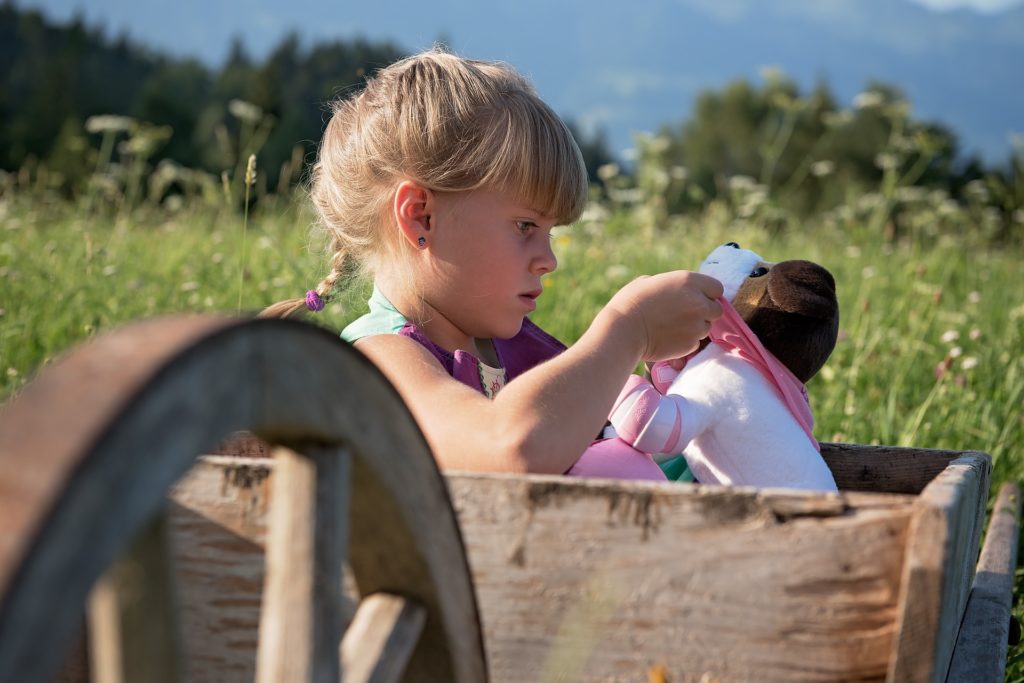A Classic Case for Parenting Slowly
Imagine you are at the playground with your toddler. He makes his way to a ladder leading to a slide. After considering it, he climbs up one rung and stops. He looks at you, and starts to fuss: he seems unable, or at least unwilling, to finish climbing the ladder.
What do you do?
From my extremely unofficial research, most parents would lift their toddler to the top and help them come down the slide. Charlotte Mason, however, would see this as a perfect opportunity to practice masterly inactivity: the idea that not interfering with our children can, in many cases, enable their learning and growth. Masterly inactivity recognizes that if we do everything for our kids, we will limit their development. This principle tells us that we need to trust that our children have an internal drive to master new skills and learn new things, and that one of the most important things we can do as parents and educators is to simply step out of the way.

Leaving Kids Alone with a Purpose
I’m going to give you a long quote to read. It’s long, but it’s good, and at the end I will highlight what I believe are the main points about masterly inactivity and our young kids. This quote is from School Education. This version has been put into modern English, provided by Ambleside Online. (Miss Mason’s original writing from 1904 isn’t always the easiest to sift through.)
[Masterly inactivity] has nothing to do with the attitude of, ‘who cares?’ or ‘why bother?’ and it has even less to do with the sheer neglect that just lets things happen because it’s too much trouble to take any action to influence the outcome. ‘Masterly inactivity’ indicates an exquisitely capable moral attitude, and it’s worth our time to analyze it. The concept is perhaps most accurately phrased in Wordsworth’s words: ‘wise passiveness.’ It suggests the ability and authority to take action, a concern for the outcome, with the insight and restraint that keeps a person from interfering. But, for our purposes, the phrase conveys one more idea. It isn’t just that we’re restraining ourselves from direct involvement, there’s also a sense of our authority that our children need to be aware of whether we’re giving them a command or not. The sense of authority is the foundation of the parental relationship. If our children don’t respect our authority, then I doubt that either our direct involvement or our inactivity will do much good. This element of strength is the backbone on which our position as parents rests. ‘We couldn’t even if we wanted to,’ and the children know it. They’re free under authority, which is liberty. To be free without any authority is license.
This is what I particularly want you to notice from this quote:
- Masterly inactivity is thoughtful. We observe our child with the big picture in mind. We actively remember that just because we can take action, it doesn’t necessarily mean that it would be in our, or our child’s, best interest. Our inaction is as purposeful as our action.
- Masterly inactivity is not passive. This isn’t lazy, neglectful parenting. We want our children reach their potential. We simply challenge the idea that we must interfere in order for that to happen.
- Masterly inactivity requires strong leadership. As Janet Lansbury often discusses, our children need us to be strong, gentle, calm leaders. Without that foundation, they will feel unstable, insecure, and out of control.

What does Masterly Inactivity Look Like?
So this is all clear as mud, right? We are meant to give our kids space, but also be in charge? We show we care about them by making sure they spend time alone? Everything becomes more understandable to me when I imagine situations that exemplify this concept. Think about these situations:
- I have N and G at a field near our home for a picnic. After he finishes lunch, N runs over to a tree and starts poking around looking at sticks and mud. He is quite a ways away, but I stay on the blanket. N starts to walk towards the gate out of the field. I call for him to stay inside, and prepare to stand up and bring him back in if needed. He considers for a moment, then moves past the gate and continues exploring within the boundaries of the field.
- N and G are playing in the living room. G starts to grab at the toy N is holding, and N objects. I watch the situation unfold as G succeeds in grabbing the toy and N becomes upset. I decide to intervene minimally by asking N what he can do, and then suggesting he find another toy for G. N trades a new toy for the one he originally had and both children are happy.
- N is having a particularly sensitive day and is repeatedly upset by G encroaching on his personal space. I ask N if he would like to go upstairs and play in his room for a while. He agrees. I put him in his room with the baby gate shut and go back downstairs to finish a few chores. I don’t know what N is doing while he is up there, but he is quiet and I assume happy to have refuge from his brother.
So to sum up, masterly inactivity takes place within the quiet, secure days we provide for our kids: free from schedules and activities. It takes place when they are in charge of their own time. We are tuned into what’s going on, and we are prepared to intervene in order to keep our children safe, or, if needed, to coach our children through a difficulty. However, our intervention is as small as possible, with the understanding that our kids will learn more and become stronger people when they try things for themselves (including making decisions, cooperating with others, and regulating their actions).
Next in this series, I’ll look at when and how we can practice masterly inactivity with our young kids. I hope you’re beginning to gain a sense of the calm, relaxed pace Charlotte Mason is encouraging. Stay tuned!
This post is part of my Charlotte Mason and the Early Years series.
A letter from me to you, every week.
Like this post? Join the Around the Thicket newsletter for more ideas, encouragement, and inspiration for your Charlotte Mason journey. You’ll also receive my audio read-along of Charlotte Mason’s School Education. Not sure? Find out more.



2 Comments